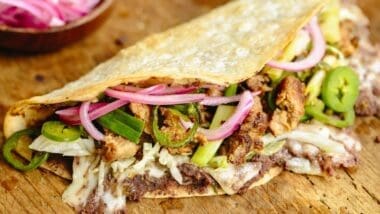In an exploration of Viking culinary traditions, a YouTuber attempts to recreate authentic meals from the Scandinavian era, focusing on the rich and varied diet that empowered these legendary seafarers.
The journey begins with an iconic Viking dish, skyr, a high-protein yogurt-like food. Utilizing fresh whole milk and a starter culture, the preparation of skyr involves fermenting the mixture for over 20 hours. The result, although not entirely pleasant in smell, is a thick, cheese-like substance. The addition of honey and walnuts enhances its flavor, providing a glimpse into how Vikings sustained their energy.
On the second day, the focus shifts to barley porridge and homemade mead. Barley was a staple, and when combined with butter, honey, and cream, it transforms into a creamy, dense breakfast option. Mead, a fermented honey beverage, symbolizes Viking camaraderie. The process of making mead includes fermenting honey with water and yeast, but the beverage requires a month to develop its characteristic flavor.
Day three introduces pickled herring—a tribute to the Vikings’ seafaring lifestyle. Pickling, achieved by layering fish with vinegar, sugar, and onions, preserves the fish without salt, showcasing the adaptation to local resources. The dish, reminiscent of traditional Dutch recipes, offers a unique sweet and tangy flavor profile.
As the week progresses, a hearty Viking stew and flatbread highlight the Vikings’ love for sustaining, communal meals. Bison, along with root vegetables and herbs, stews slowly to create a nourishing dish. The accompanying flatbread, made simply from flour and water, complements the stew with its chewy texture.
Salted cod, prepared on the fifth day, demonstrates another preservation technique crucial for long voyages. The fish is cured with salt for a week, resulting in a firm, sushi-like texture that, while not entirely enjoyable, reveals the practicalities of Viking dietary habits.
Gravlax, made with salmon, salt, and dill, features on day six. This preserved fish is ready after three days and is used in a modern adaptation on flatbread with cream cheese and capers. The ease of preparation and the rich taste make it a standout discovery.
On the final day, an extravagant lamb leg is prepared, symbolizing a feast for Viking nobility. Seasoned with garlic, herbs, and a flavorful rub, the lamb roasts over apple wood, bringing a rich taste that Vikings might have relished during their celebrations. A homemade mead, with its robust and slightly bitter taste, accompanies the meal, creating a strong finish to the culinary week.
This culinary exploration offers insight into the diverse and practical diet of the Vikings. Through various preservation techniques and hearty ingredients, these ancient warriors fueled their legendary exploits across Europe. While recreating these meals presents challenges, it also provides modern audiences a taste of history, reflecting the cultural significance of food in Viking society.
Source: Youtube














